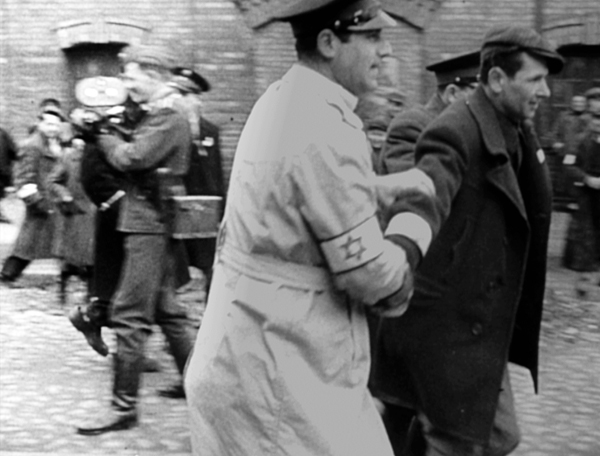|
Reviews of Recent Independent, Foreign, & Documentary Films in Theaters and DVD/Home Video

A FILM UNFINISHED A Film Unfinished is a powerful warning with a universal message—movies lie. Without memory and context, we can forget the truth and believe what we see. Israeli director Yael Hersonski masterfully delves behind the silent images of about an hour’s worth of 35mm film labeled “The Ghetto.” Found in 1954 in a former Third Reich vault, excerpts from these reels have since been used in documentaries and museum exhibitions for showing what life was like in the Warsaw Ghetto of May 1942, when hundreds of thousands of Jews had been rounded up and crowded into less than three square miles with little food and supplies. Hersonski compiles astounding evidence about the making of this footage that is both meticulously detailed and overwhelmingly emotional. That spring, Joseph Goebbels, the Nazi Minister of Propaganda and Enlightenment, was planning on using film as a tool for public education about what was called the resettlement of the Jews, though no specific authorization for this particular effort has been found. Children, the elderly, and more, in the dregs of horrible living conditions—dying before our eyes—are shown in direct juxtaposition with well-dressed people ignoring them. The Nazis’ intention seemed to be to show that wretched Jews were the victims only of rich, insensitive Jews. That possible objective doesn’t seem farfetched given the testimony of the Polish government-in-exile envoy in Claude Lanzmann’s Shoah (1985); he smuggled himself in and out of the Warsaw Ghetto, then met personally with FDR and a British foreign secretary to report the conditions—only to find that they weren’t interested. We see and hear excerpts from hidden diaries by residents, young and old, male and female, of what they witnessed during the four weeks the Germans filmed, including the day-by-day account of Adam Czerniakow, the head of the ghetto’s Jewish Council. As scenes unfold, the entries describe exactly where participants were ordered to appear, the long hours they had to follow the shouted instructions, and the punishments if they didn’t perform to specifications. The hollow-eyed expressions at the camera start to take on a new meaning. The footage adds yet another perspective, like a despicable version of Antonioni’s Blow-Up, when supplemented with some of the 30 minutes of outtakes, discovered accidentally at an air force base in 1998. Through the outtakes, Hersonski reveals how sequences were staged for the cameras. Excruciating scenes are labeled “take 1,” “take 2,” and so on, of starving children and corpses being loaded into coffins. It’s sometimes unfathomable why these vignettes needed to be repeated. A few shots accidentally catch the cameramen in their frame. Hersonski slows down the film for these chance sightings to ponder the role of these uniformed men. After another researcher stumbles upon a permit issued to Willy Wist to film in the ghetto, she finds Wist’s deposition that was used for background information by German prosecutors preparing a war crimes trial. This proceeding is reenacted, where he clinically describes the technicalities of filming the scenes. With the memory of her late grandmother who survived the ghetto as inspiration for this project, Hersonski and her researcher tracked down five survivors in Israel in their 80s who she felt could withstand watching the fraught footage. We watch their expressions as they search for familiar faces from their childhoods. They identify specific individuals the cameras follow along the streets who were driven insane by hunger, illness, and grief. The survivors add invaluable perspective to the scenes that depict others living seemingly normal lives. Not only are the staged Jewish ritual scenes scorned as grossly inaccurate, one elderly witness snorts at seeing a flower on a coffin. “Where did they get a flower? We would have eaten a flower!” That supposedly typical funeral is contrasted with scenes of naked corpses funneled into mass graves, though we know that within months this will be the fate of most of the residents. Transports to extermination camps would begin in July and the ghetto liquidated in 1943. While this sequence is probably why the MPAA wouldn’t budge on the R rating, Hersonski says she excluded other scenes of degradation that the survivors couldn’t bear to view. That there
is still more visual evidence out there that can support the memories of
the dwindling number of survivors has also been effectively shown in
Lukas Pribyl’s similarly well-researched
Forgotten
Transports
quartet on the
fates of Czech Jews. Here, A Film Unfinished graphically demonstrates
that photographs and films are never enough on their own.
Nora Lee Mandel
|

